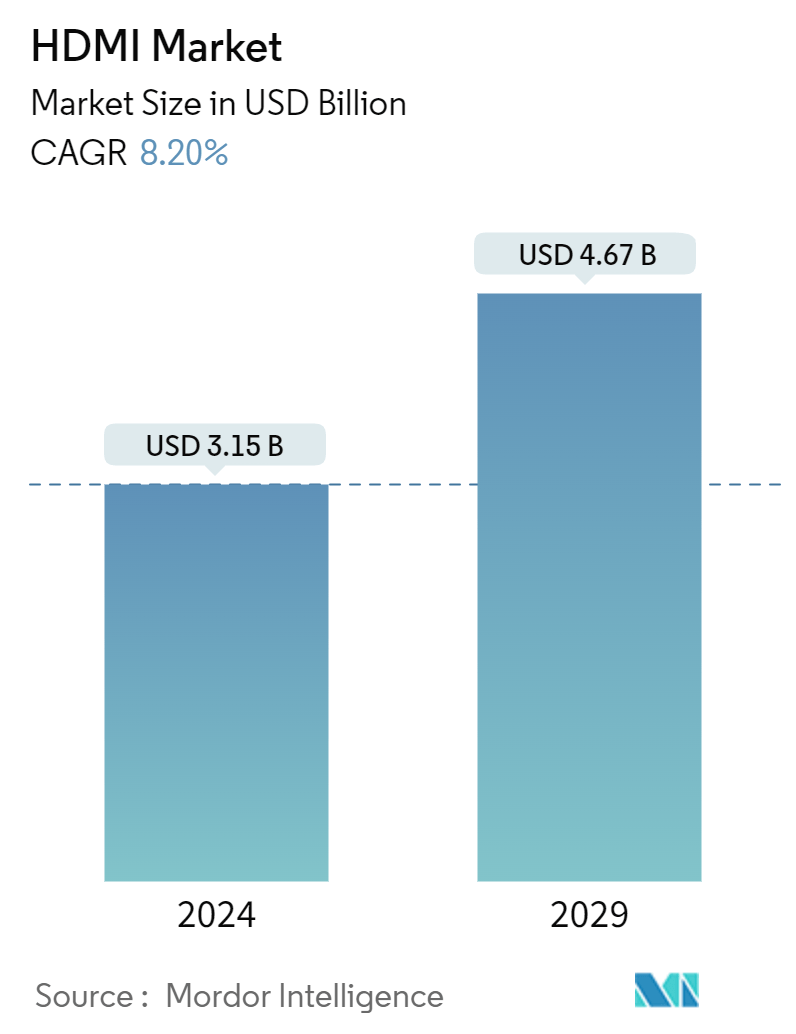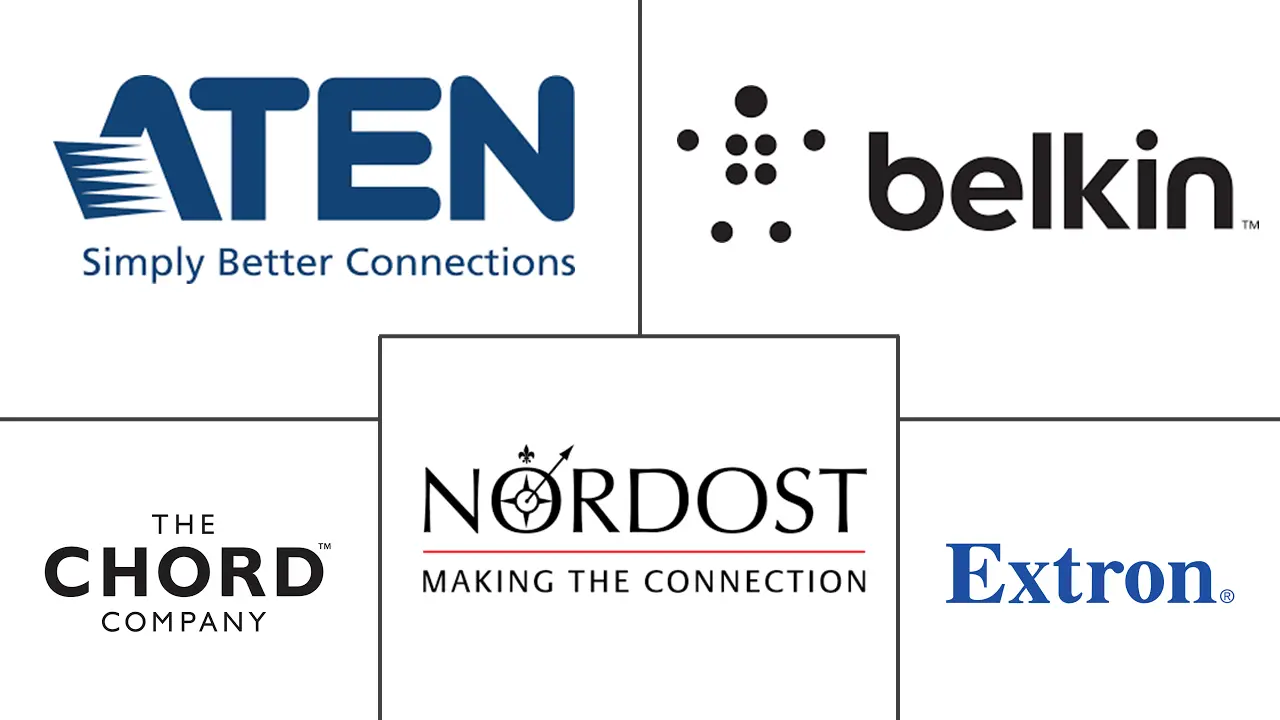Market Size of HDMI Industry

| Study Period | 2019 - 2029 |
| Market Size (2024) | USD 3.15 Billion |
| Market Size (2029) | USD 4.67 Billion |
| CAGR (2024 - 2029) | 8.20 % |
| Fastest Growing Market | Asia Pacific |
| Largest Market | North America |
Major Players
*Disclaimer: Major Players sorted in no particular order |
HDMI Market Analysis
The HDMI Market size is estimated at USD 3.15 billion in 2024, and is expected to reach USD 4.67 billion by 2029, growing at a CAGR of 8.20% during the forecast period (2024-2029).
- As technology advances, consumers increasingly gravitate toward high-definition devices, including 4K TVs and premium sound systems. These devices predominantly rely on HDMI connections for optimal performance. The advantage of a single cable transmitting audio and video signals solidifies HDMI's status as the go-to choice for device connectivity, leading to its widespread acceptance.
- The surge of 4K and 8K content from streaming services, Blu-ray discs, and video games underscores the demand for HDMI cables capable of supporting these high resolutions. Versions HDMI 2.0 and HDMI 2.1 offer the necessary bandwidth for 4K at refresh rates of 60Hz and 120Hz and even accommodate 8K at reduced refresh rates. This escalating demand for superior content prompts consumers to invest in compatible devices, further energizing the HDMI market.
- As streaming services become the primary entertainment source for many, the reliance on HDMI connections has surged. Smart TVs and media players, often featuring HDMI ports, simplify the connection to these streaming devices. This seamless access to premium content through HDMI elevates the viewing experience and drives a broader adoption of HDMI-enabled devices.
- Modern gaming consoles are also designed to provide visually captivating experiences, frequently at 4K resolution or beyond. HDMI cables play a pivotal role in relaying these high-definition video signals from consoles to their displays. Given gamers' expectations for crisp graphics and seamless performance, HDMI becomes indispensable for attaining optimal visual quality in gaming. Advancements in graphics and audio and the growing streaming culture are driving the gaming industry's growth, leading to increased adoption of gaming consoles. This rising demand for enhanced gaming experiences, in turn, is fueling the HDMI market.
- However, setting up a complete audio-visual system with HDMI can be costly. The expenses encompass HDMI cables and essential devices such as receivers, projectors, and high-definition displays. These financial considerations can deter consumers and businesses from investing.
- The ongoing stock market crisis and economic recessions can disrupt manufacturing processes, causing production delays and shortages of HDMI-compatible devices. Such disruptions pose challenges in meeting consumer demand, even when purchasing interest exists. Shipping and logistics can face setbacks, leading to heightened costs and delays in delivering HDMI products to retailers and consumers.

